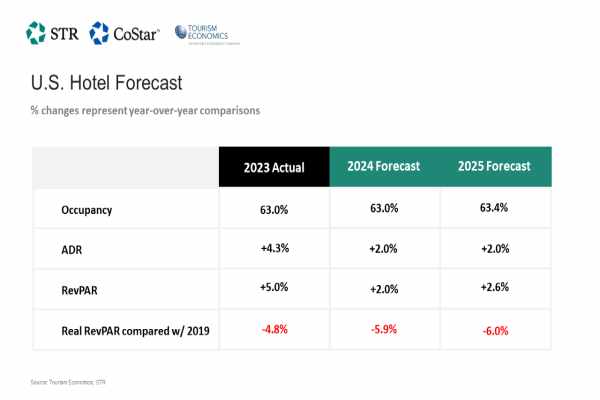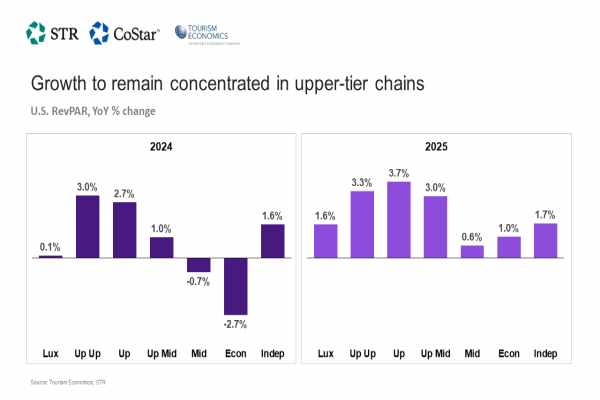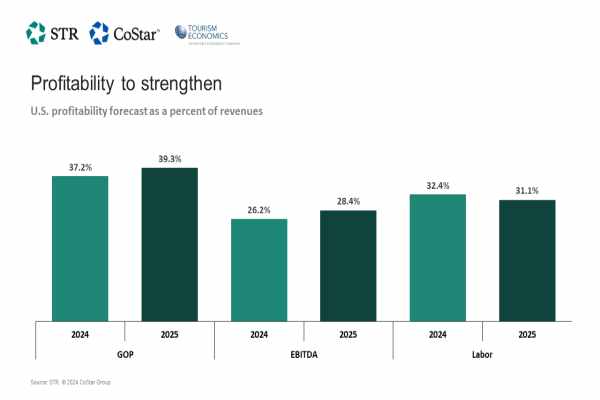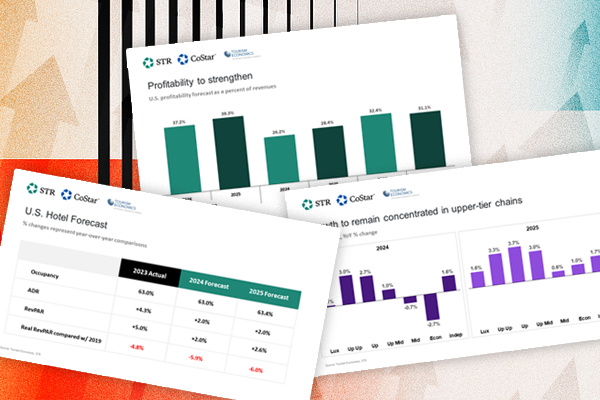STR and Tourism Economics (TE) have made slight changes to the US hotel forecast for 2024-25.
Although RevPAR was held steady at +2% year-on-year for 2024, forecast ADR increases were revised downward by 0.1 percentage points. Occupancy was revised upward by 0.2 percentage points after the June forecast had projected a year-on-year decline in this metric.
The forecast for occupancy growth through 2025 was also raised (by +0.2 percentage points), while the forecasts for ADR and RevPAR growth were left at +2% and +2.6%, respectively.
Mid-range and economy hotels are feeling the impact of fewer low-income travelers, while high-income households continue to travel but domestic volume is limited due to the increase in international travel, says Amanda Hite, president of STR.


“The stronger dollar continues to put pressure on international demand, particularly given the ongoing cost of living crisis in Europe and the rebuilding of the air bridge in the Asia-Pacific region.”
Economic growth is expected to slow in 2025, but strong fiscal balances, an expected gradual recovery in business investment and moderating inflation are expected to create a more favourable environment for growth in travel, said Aran Ryan, Director of Industry Studies at TE.
Further increases in international arrivals, as well as business and group travel, will also help support growth in accommodation demand in 2025, Ryan added.

According to STR, annual GOP and EBITDA margins are expected to show a slight improvement year-on-year, with higher growth in both metrics likely next year due to lower labor costs, which will see a marginal decline at most chains.
“Upper-middle-range chains are expected to have the lowest labor costs again this year. In 2025, values are expected to be $168 lower than those of luxury chains,” Hite said.
In their June forecast, STR and TE revised the forecast significantly downward, reflecting the below-expected performance observed to date. For 2024, the forecast increases in ADR and RevPAR were reduced by 1 and 2.1 percentage points, respectively. The occupancy growth forecast remained unchanged for 2025, but ADR and RevPAR were reduced to -0.8 and -0.9 percentage points, respectively. The increase in the cost of living has impacted low- to middle-income families and their ability to travel, reducing demand for lower-priced hotels, STR said.

